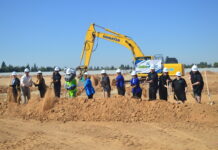
On July 5, at 8:19 p.m., yet another earthquake hit California near Ridgecrest. Measured at a 7.1 magnitude, this quake was centered near a magnitude 6.4 earthquake from July 4 that also had an epicenter near Ridgecrest.
According to The New York Times, the earthquake’s rupture was 10 to 15 miles long, and CNN reported that the July 5 quake released 11 times the amount of energy of July 4’s quake.
This earthquake was felt throughout California, from Los Angeles to cities as far as Concord, San Francisco, and Sacramento. Specifically in Clovis, Calif., residents reported doors and beds rattling, swaying lights, and buildings shaking. Some accounts even reported some rolling ground.
According to a recent forecast from the United States Geological Survey, “more [aftershocks] will continue to occur near the mainshock” and “this earthquake could be part of a sequence.” This means that there may be larger and more “potentially damaging” quakes in the future.
This earthquake was the largest Southern California quake in 20 years, according to reports from ABC News, and it was followed by a series of aftershocks, some reaching a 5.0 magnitude.
Furthermore, Lucy Jones, a seismologist from the California Institute of Technology and a former science advisor at USGS, has indicated that there is a one in 10 chance that another 7.0 earthquake could hit within the near future.
In a conversation with Chad Fitzgerald from the Clovis Emergency Response Team, some tips for earthquake preparedness were provided. “Make sure you have 72 hours of self-preparedness that caters to your family, whether it’s perishable foods, water, or copies of important documents.”
He also emphasized an element that helps with earthquake preparedness: turning off the gas at home. “Sometimes people don’t know how to, or forget to turn off the gas at home. So, after an earthquake, if you smell gas, right away shut it off.”
Fitzgerald explained one of the biggest myths around earthquakes: “The myth is that whenever there’s an earthquake and you’re inside, you run outside. The fact is that you should stay inside, find a safe spot, and duck and cover. If you run outside, you open the risk of a building or something else falling on top of you.”
Specifically for Clovis residents, Fitzgerald pointed out that Clovis is not set directly on a fault, nor is it adjacent to a fault line. But, he said, “Clovis people travel just as much as anyone, so staying safe and being prepared is the best thing. When you’re inside a building, know your exits and be aware of your surroundings.”
Correction: An earlier version of this article reported a 7 magnitude for July 5’s earthquake.







